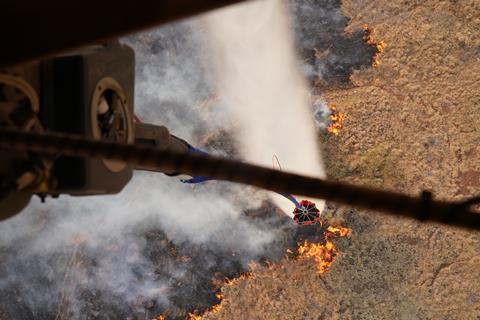Karen Clark & Company (KCC) has estimated the property insurance losses arising from the wildfires in Maui to be around $3.2bn.

The catastrophe risk re/insurance modelling firm said in a statement wildfires in Maui have damaged or destroyed more than 2,200 structures.
KCC made its $3.2bn insured property loss estimate for Lahaina through its US Wildlife Reference Model.
The fires began last week and then spread through high winds. The death toll has already surpassed 100 people.
Local authorities have said the fire is 85% contained with no further fire spread forecast.
KCC wrote: “The Lahaina fire burned approximately 2,170 acres and devastated the town of Lahaina in Maui, HI.
“Through an independent geo-spatial analysis of satellite and aerial imagery, KCC estimates that more than 2,200 structures fall within the fire perimeter, and over 3,000 total structures were impacted by the fire, including secondary impacts such as branding and smoke.”
It added: “The majority of damaged structures were residential buildings, though many commercial buildings were damaged as well. The high proportion of wood frame and older construction present in the Lahaina building inventory likely contributed to the high damageability rates observed in the fire.”
The fires began following a period of low humidity and drought in Maui. Parts of the area had been under moderate to severe drought ahead of the fire and humidity was unusually low (just eleven per cent) at the time of the event.
Maui has had below average precipitation through the spring and summer, which contributed to the drought conditions.
Hawaii had also had a very wet season prior to the drought, which increased vegetation and created additional fuel, primarily nonnative fire-prone grasses and brush.
In addition to the fire that devastated Lahaina, several other fires broke out on the island of Maui on 8 August, including the Upcountry/Kula fire and Pulehu/Kihei fire.
These two fires produced minimal insured losses because they occurred in rural areas. The exact cause of each fire remains under investigation.
KCC said that climate change was a contributing factor to the wildfires, having left Hawaii vulnerable through a hotter dry season.










No comments yet